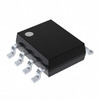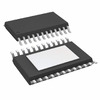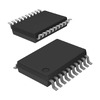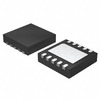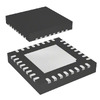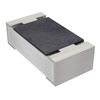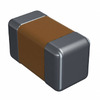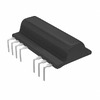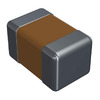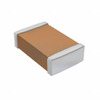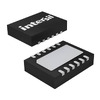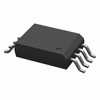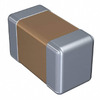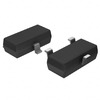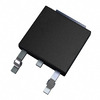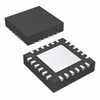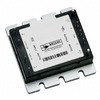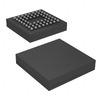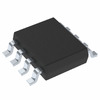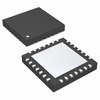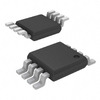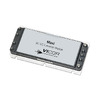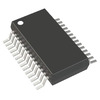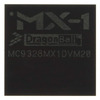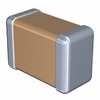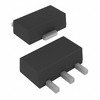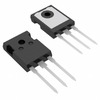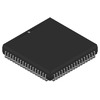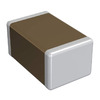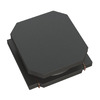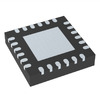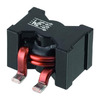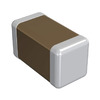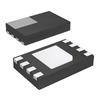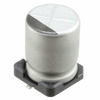All About TL594: Features, Design, and Uses
The TL594 is a reliable device designed for pulse-width modulation control. It simplifies complex tasks like signal timing and power management, making it a versatile choice for various circuit applications. With features like error amplifiers, adjustable oscillators, and dead-time control, it provides efficient and adaptable performance. Whether you're managing power supplies or fine-tuning circuit behavior, this device offers an easy-to-use solution.Catalog
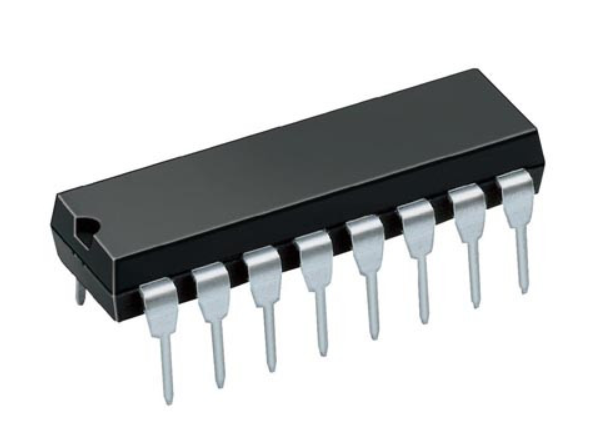
Overview of TL594
The TL594 is a versatile device designed to meet the needs of pulse-width-modulation (PWM) control circuits. It's often used in power-supply designs, offering engineers the flexibility to adapt its control functions for specific purposes. Packed with features like error amplifiers, an adjustable oscillator, and a dead-time control comparator, it handles complex tasks efficiently.
Its error amplifiers work within a specific voltage range, ensuring stable performance. The on-chip oscillator adds convenience by allowing both master and slave operations, while the dead-time control ensures optimal performance by managing signal timing. With output options for either push-pull or single-ended configurations, it can cater to a variety of setups.
This device is also designed to lock its outputs until all internal systems are functioning correctly, enhancing reliability. With its robust build and temperature-based variants, the TL594 is suitable for a wide range of applications, offering reliable performance in demanding environments.
TL594 Pin Configuration
[IMAGE OF TL594 Pin Configuration]
TL594 CAD Model
TL594 Symbol
[IMAGE OF TL594 Symbol]
TL594 Footprint
[IMAGE OF TL594 Footprint]
TL594 3D Model
[IMAGE OF TL594 3D Model]
Features of TL594
Complete Pulse Width Modulation Control Circuit
The TL594 is designed to offer a complete pulse-width modulation control system, making it versatile for a variety of applications. This feature ensures that you have the flexibility to manage timing and signal output effectively within your circuit.
On-Chip Oscillator with Master or Slave Operation
With an on-chip oscillator, the TL594 allows you to choose between master and slave operations. This adaptability makes it easy to integrate the device into different setups, ensuring smooth and synchronized performance for your design.
On-Chip Error Amplifier
The built-in error amplifier helps maintain accuracy by correcting any deviations in your circuit. This means you can rely on consistent performance and avoid unnecessary disruptions during operation.
On-Chip 5.0 V Reference Voltage Source with 1.5% Accuracy
The TL594 includes a precise 5.0 V reference voltage source with an impressive 1.5% accuracy. This feature ensures that your system remains stable, delivering reliable voltage outputs for sensitive components.
Adjustable Dead Time Control
This device allows you to adjust the dead time, giving you control over the timing between signals. This feature is particularly useful when optimizing circuit performance to prevent overlap or interference.
Non-Dedicated Output Transistor with Rated Output Current
Equipped with a non-dedicated output transistor, the TL594 can handle a rated output current of up to 500 mA, whether sourcing or sinking. This capability ensures that it can manage a range of output requirements with ease.
Output Control for Push-Pull or Single-Ended Operation
The TL594 offers output control options, allowing you to choose between push-pull and single-ended configurations. This flexibility ensures that the device can meet the specific needs of your project, no matter the setup.
Undervoltage Lockout
To enhance reliability, the TL594 features an undervoltage lockout mechanism. This ensures that the device only operates when internal conditions are fully ready, protecting your circuit from potential issues caused by insufficient voltage.
Lead-Free Packaging
The TL594 comes with lead-free packaging, making it an environmentally friendly choice. You can confidently use this device while adhering to modern environmental standards.
TL594 Specifications
Technical specifications, features, characteristics, and components with comparable specifications of Texas Instruments TL594.
[TABLE OF Specifications]
Functional Block Diagram of TL594
[IMAGE OF TL594 Functional Block Diagram]
Circuit Design of TL594
[IMAGE OF TL594 Circuit]
Amplifier Characteristics Test Circuit for TL594
[IMAGE OF Amplifier-Characteristics Test Circuit]
Operational Test Circuit and Waveforms for TL594
[IMAGE OF Operational Test Circuit and Waveforms]
TL594 Mechanical Details
[IMAGE OF TL594 Mechanical Data]
Manufacturer Information of TL594
Texas Instruments, the company behind the TL594, is a leading technology manufacturer based in Dallas, Texas. They specialize in designing and producing semiconductors and integrated circuits for various industries worldwide. Known for their innovative approach, they focus heavily on analog chips and embedded processors, which form a major part of their business.
The company also creates other advanced technologies like digital light processing systems and educational tools, including calculators and microcontrollers. With a global presence and decades of expertise, Texas Instruments continues to support engineers and designers with high-quality products. Their extensive portfolio and dedication to innovation have made them a trusted name in the electronics industry.
Frequently Asked Questions [FAQ]
1. What makes TL594 different from TL494?
The TL594 and TL494 are both PWM controllers, but they differ in a few areas. The TL594 operates at a higher switching frequency of 300kHz compared to 200kHz for the TL494. Additionally, the TL594 has a reference voltage accuracy of 1%, providing more precision in voltage regulation, while the TL494 offers 5% accuracy. The TL594 also includes a feature to lock outputs during low voltage conditions, which enhances reliability in sensitive applications.
2. Are there other PWM power control chips like the TL594?
Yes, there are several PWM control chips available, but the TL594 stands out for its versatility and features. It has 16 pins and can manage a range of functions, including adjustable dead time, push-pull operation, and reliable voltage control. These capabilities make it a suitable choice for various power management and circuit control applications.
3. How does the TL594 work?
The TL594 generates square wave signals with a fixed frequency and an adjustable pulse width through its output terminals, Q1 and Q2. The frequency is determined by external components connected to the RT and CT pins, calculated using the formula f = 1.1/(RT × CT). The pulse width is controlled by a signal from the flip-flop module, which is influenced by comparators like the dead-time comparator, pulse-width modulation comparator, and undervoltage lockout comparator. These components work together to ensure stable, reliable operation, with only one output pulse generated at a time to maintain precision.
Sou nou
ALLELCO LIMITED
Li piplis
Quick Inquiry
Tanpri voye yon ankèt, nou pral reponn imedyatman.
Kesyon yo poze souvan [FAQ]
1. What makes TL594 different from TL494?
The TL594 and TL494 are both PWM controllers, but they differ in a few areas. The TL594 operates at a higher switching frequency of 300kHz compared to 200kHz for the TL494. Additionally, the TL594 has a reference voltage accuracy of 1%, providing more precision in voltage regulation, while the TL494 offers 5% accuracy. The TL594 also includes a feature to lock outputs during low voltage conditions, which enhances reliability in sensitive applications.
2. Are there other PWM power control chips like the TL594?
Yes, there are several PWM control chips available, but the TL594 stands out for its versatility and features. It has 16 pins and can manage a range of functions, including adjustable dead time, push-pull operation, and reliable voltage control. These capabilities make it a suitable choice for various power management and circuit control applications.
3. How does the TL594 work?
The TL594 generates square wave signals with a fixed frequency and an adjustable pulse width through its output terminals, Q1 and Q2. The frequency is determined by external components connected to the RT and CT pins, calculated using the formula f = 1.1/(RT × CT). The pulse width is controlled by a signal from the flip-flop module, which is influenced by comparators like the dead-time comparator, pulse-width modulation comparator, and undervoltage lockout comparator. These components work together to ensure stable, reliable operation, with only one output pulse generated at a time to maintain precision.

Eksplore Capteur a BMP280
sou 2024/11/20
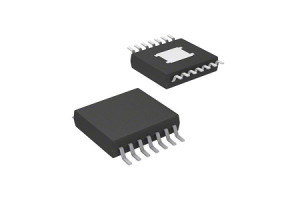
TPS1H100BQPWPRQ1 High-Side Power switch: fich, Layout, ak pinout
sou 2024/11/20
Posts popilè
-

Ki sa ki GND nan kous la?
sou 1970/01/1 3327
-

RJ-45 Connector Gid: RJ-45 Connector Koulè Kòd, fil elektrik, R-J45 aplikasyon pou, RJ-45 fich
sou 1970/01/1 2848
-
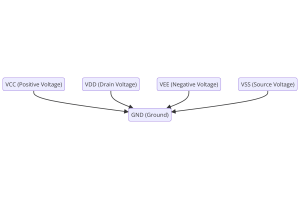
Konprann tension ekipman pou pouvwa nan elektwonik VCC, VDD, VEE, VSS, ak GND
sou 0400/11/21 2768
-

Kalite Connector Fib: SC vs LC ak LC vs MTP
sou 1970/01/1 2281
-

Konparezon ant DB9 ak RS232
sou 1970/01/1 1900
-

Ki sa ki se yon batri LR44?
Elektrisite, ki fòs omniprésente, tou dousman anvai tout aspè nan lavi chak jou nou an, ki soti nan gadjèt trivial nan lavi ki menase ekipman medikal, li jwe yon wòl an silans.Sepandan, vrèman sezisman enèji sa a, espesyalman ki jan nan magazen ak efikasite pwodiksyon li, se pa yon travay fasil.Li se kont sa a background ke atik sa a pral konsantre sou yon kalite batri selil pyès monnen ki...sou 1970/01/1 1856
-

Ki sa ki RF ak poukisa nou itilize li?
Teknoloji Radyo Frekans (RF) se yon pati enpòtan nan kominikasyon modèn san fil, pèmèt transmisyon done sou distans ki long san yo pa koneksyon fizik.Atik sa a fouye nan Basics yo nan RF, ki eksplike ki jan radyasyon elektwomayetik (EMR) fè kominikasyon RF posib.Nou pral eksplore prensip yo nan EMR, kreyasyon an ak kontwòl nan siyal RF, ak itilizasyon lajè-yo.Atik la tou kouvri jalons yo is...sou 1970/01/1 1843
-

Konprann fondamantal yo: rezistans enduktans, ak kapasite li
Nan dans la konplike nan jeni elektrik, yon Trio nan eleman fondamantal pran sant etap: enduktans, rezistans, ak kapasite.Chak pote karakteristik inik ki dikte ritm yo dinamik nan sikwi elektwonik.Isit la, nou s'angajè sou yon vwayaj Decoder konpleksite yo nan eleman sa yo, dekouvwi wòl distenk yo ak itilizasyon pratik nan vas òkès la elektrik.Enduktans, ak sòsye mayetik li yo;rezistans, ...sou 1970/01/1 1826
-

CR2430 Batri Comprehensive Gid: Espesifikasyon, Aplikasyon ak Konparezon a CR2032 pil
Ki sa ki se batri CR2430?Benefis nan pil CR2430NòmCR2430 aplikasyon pou batriCR2430 ekivalanCR2430 vs CR2032Batri CR2430 gwosèKi sa ki yo gade pou lè yo ap achte CR2430 yo ak ekivalanDone fèy pdfKesyon yo poze souvan Batri yo se kè a nan ti aparèy elektwonik.Pami anpil kalite ki disponib, selil pyès monnen jwe yon wòl enpòtan anpil, souvan yo te jwenn nan kalkilatris, kontwòl remote, ak ...sou 1970/01/1 1823
-

Gid konplè pou HFE nan tranzistò
Tranzistò yo se eleman enpòtan nan aparèy modèn elektwonik, pèmèt anplifikasyon siyal ak kontwòl.Atik sa a fouye nan konesans ki antoure HFE, ki gen ladan ki jan yo chwazi valè HFE yon tranzistò a, ki jan yo jwenn HFE, ak benefis nan diferan kalite tranzistò.Atravè eksplorasyon nou an nan HFE, nou jwenn yon konpreyansyon pi fon nan ki jan tranzistò travay ak wòl yo nan sikwi elektwoni...sou 5600/11/21 1821
